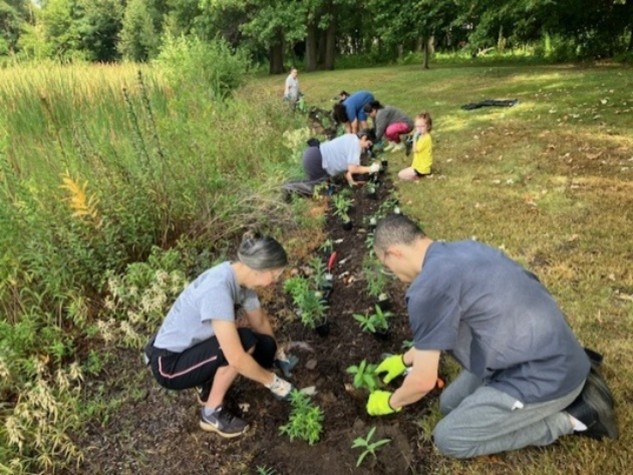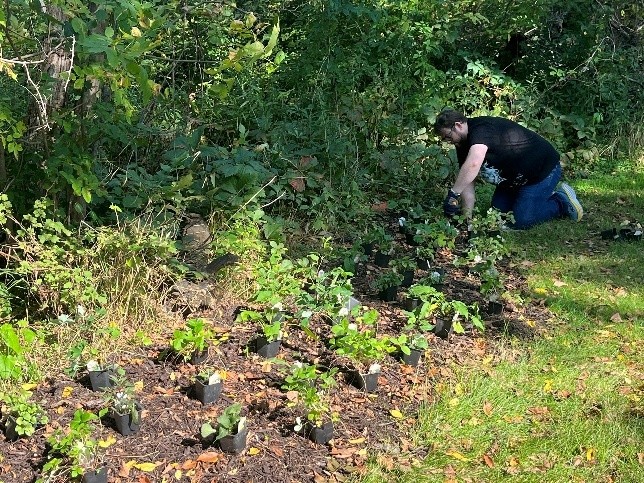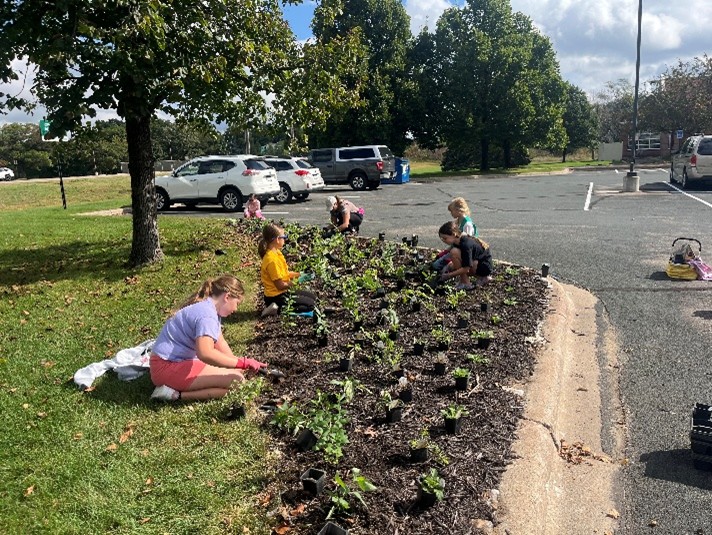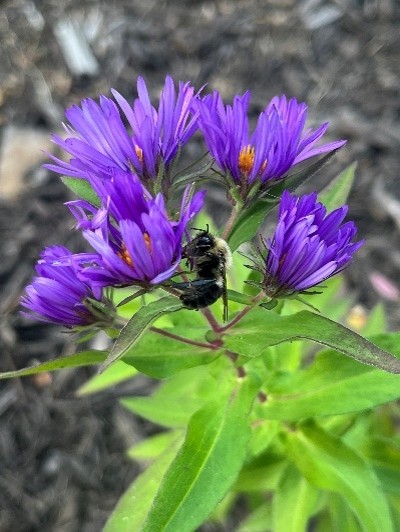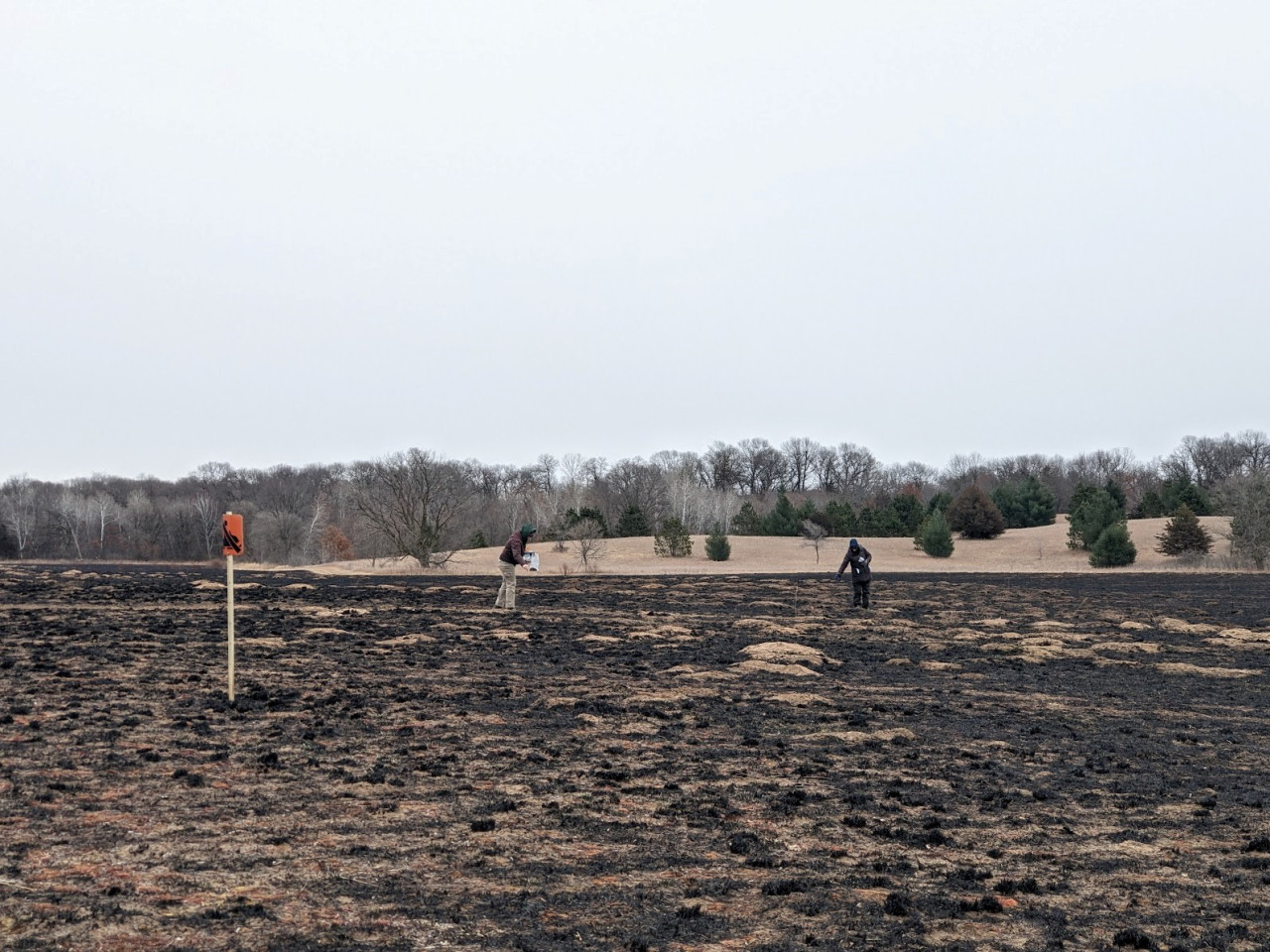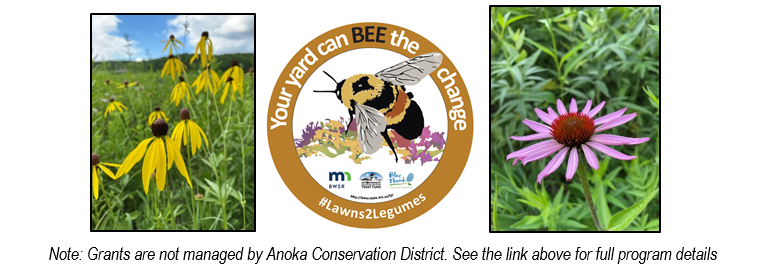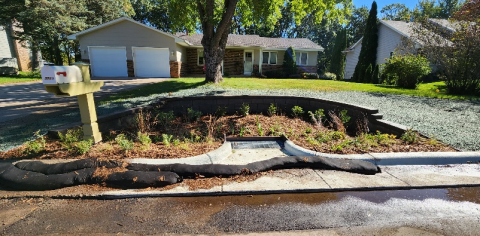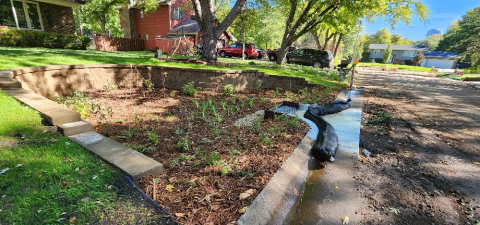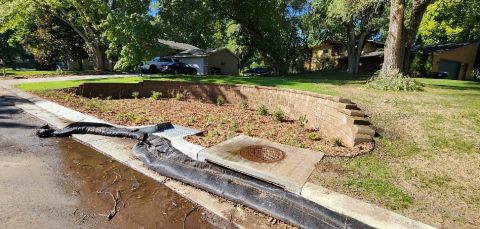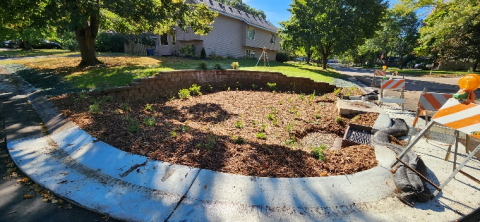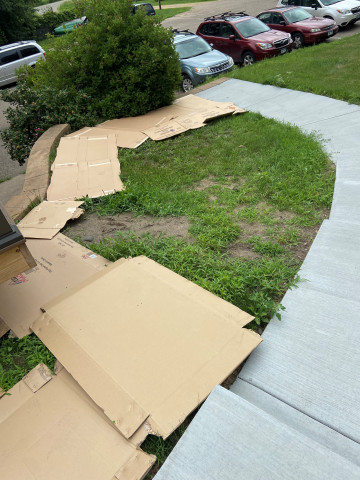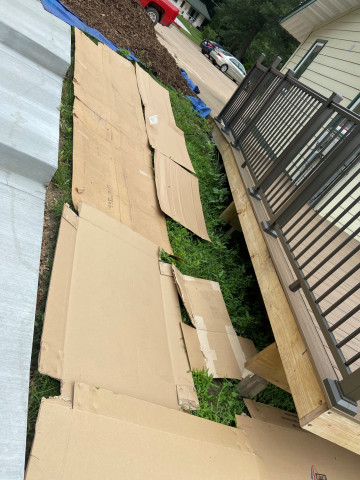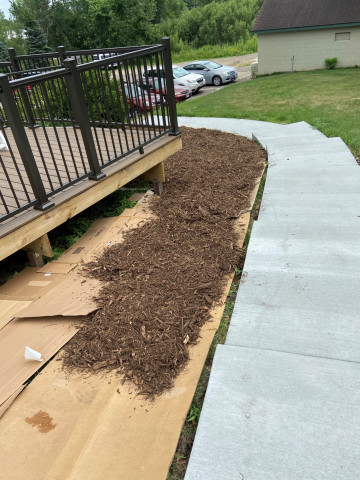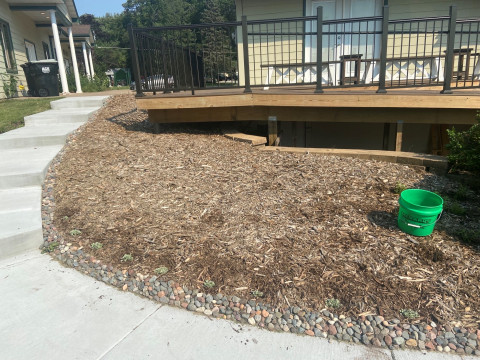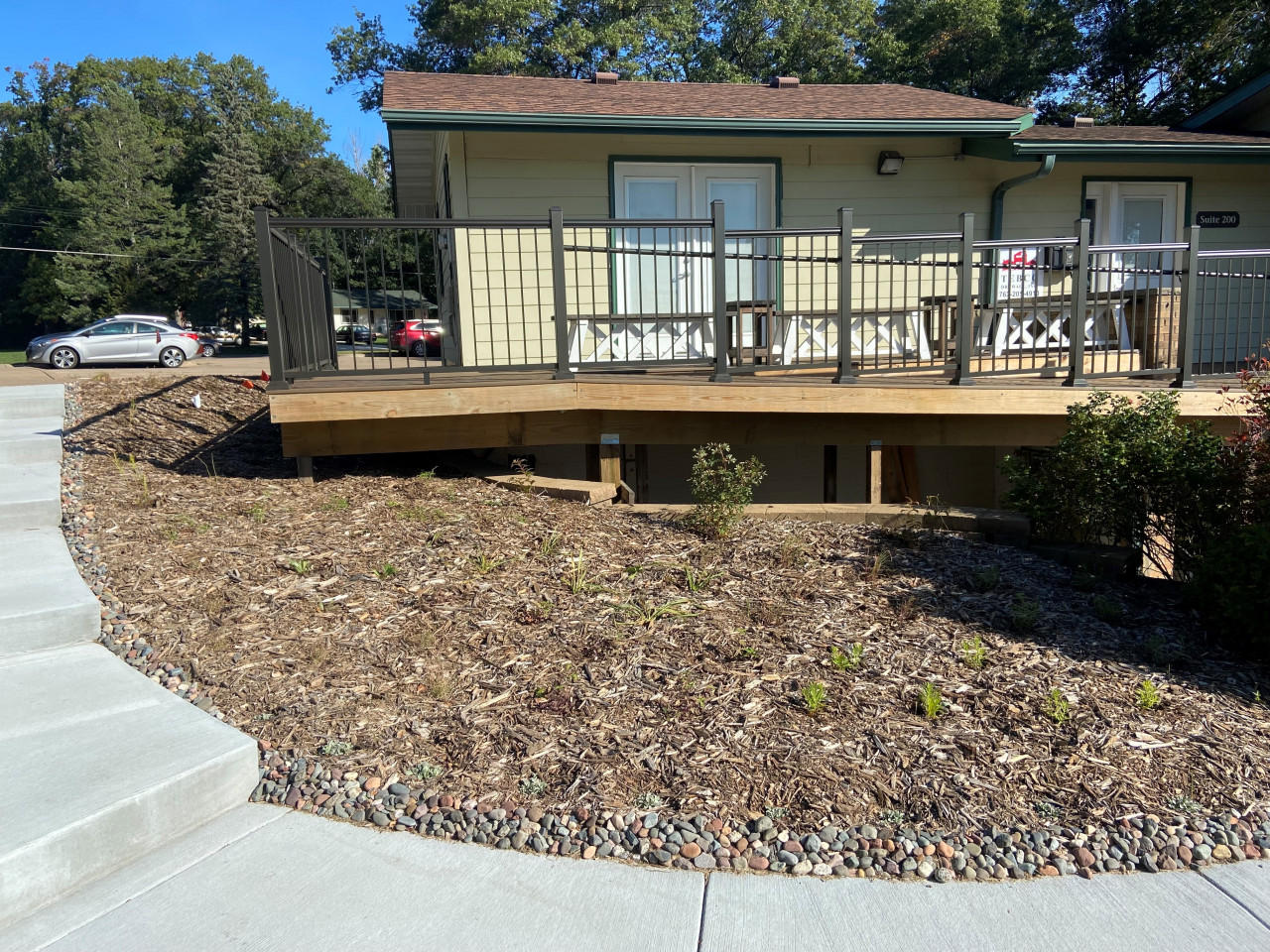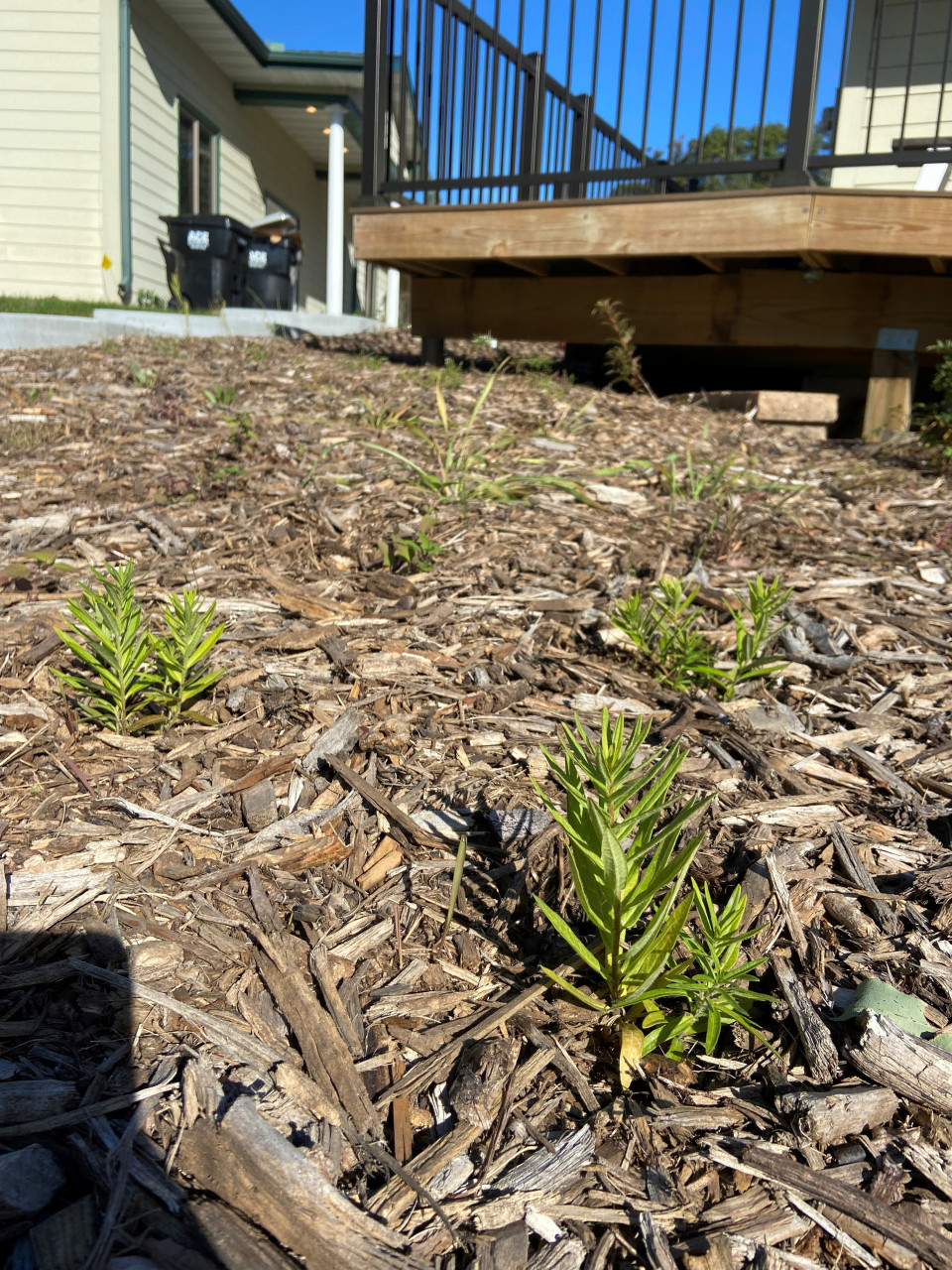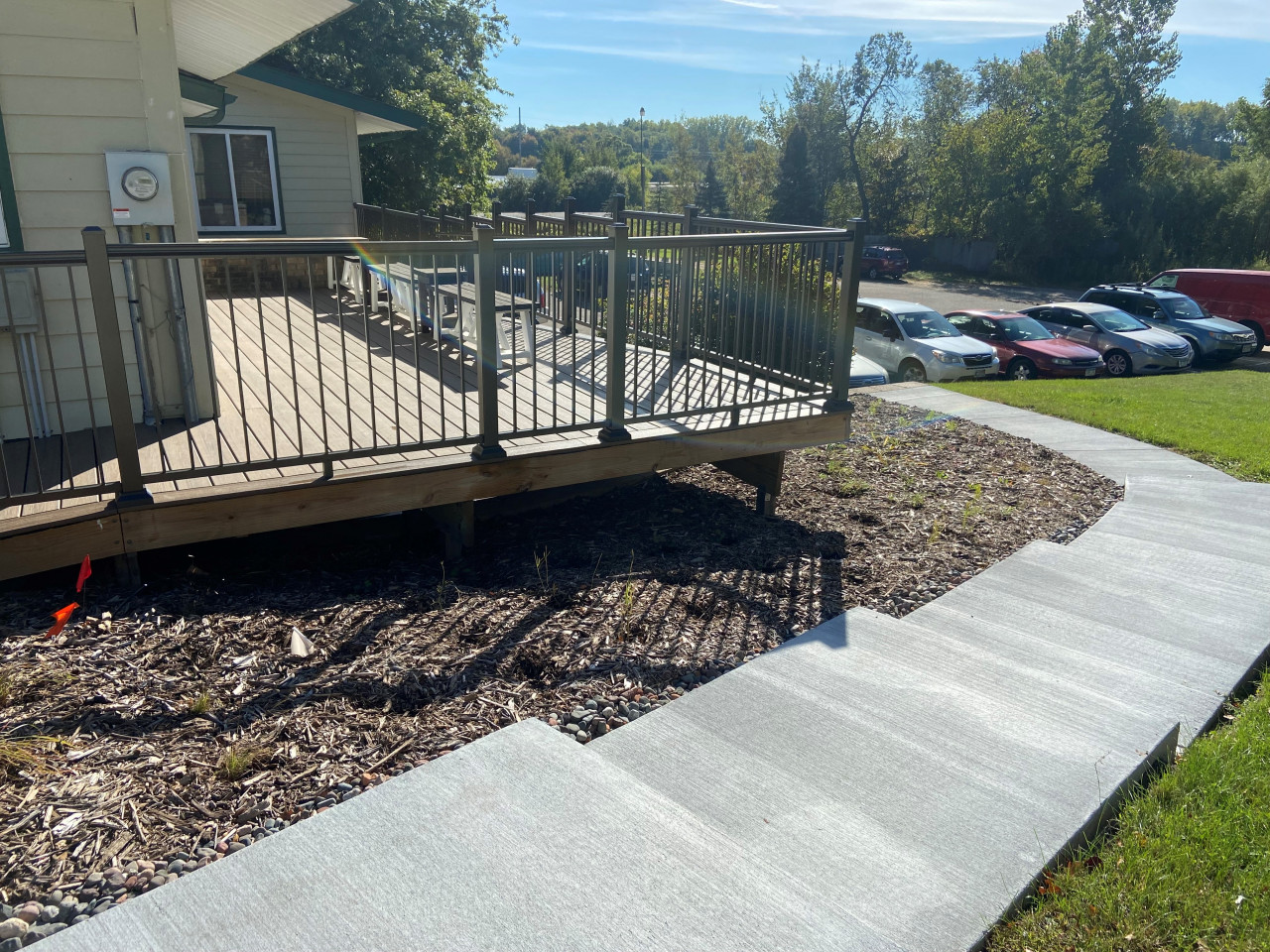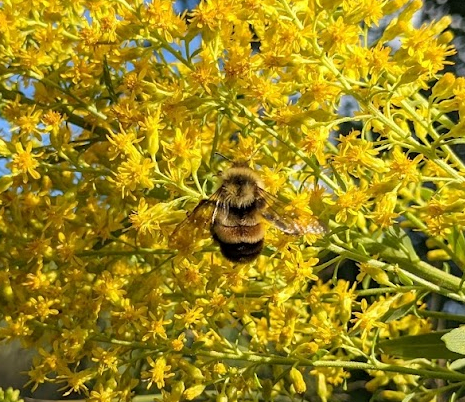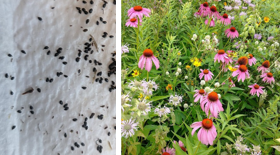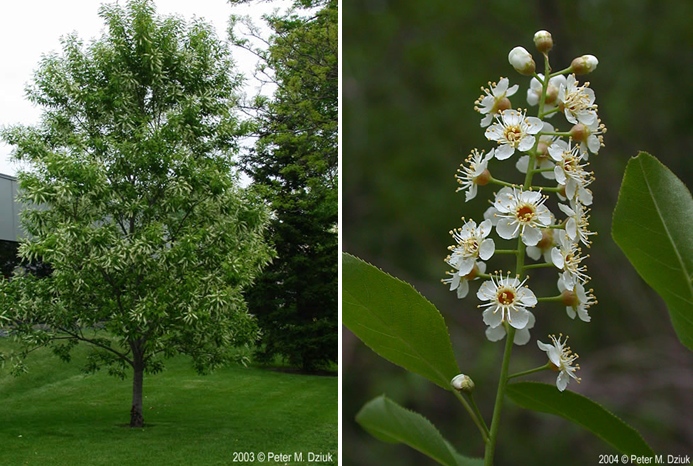In 2025, ACD partnered with three Anoka County libraries (Northtown Library, Johnsville Library, and St. Francis Library) to add native pollinator plantings to their properties. These small plantings have converted 650 sq ft of turfgrass into pollinator-supporting habitats and have connected residents to green spaces at their local libraries. We're excited to see these plantings flourish next spring!
When confronted with something eating your prized tomato plant, sometimes our first instinct is to pick up the bottle of pest spray. Oftentimes, we don't even realize that the plants we've purchased contain neonicotinoids, which are systemic (within) the plants' leaves, stems, flowers, nectar, and fruit. These 'neonics' are highly effective in killing pests, but they lack discrimination, and mounting evidence suggests they are contributing to the decline in pollinator numbers. An alternative is called IPM or Integrated Pest Management. The concept is to address pest infestations as they occur and manage pest damage on an as-needed basis, rather than chemically on a predetermined schedule.
Cultural practices may include:
- Is it a pest? Many of our most beautiful butterflies will use our garden or yard as a source of food, as well as caterpillars! If you can't identify the insect snacking on your plant, try contacting the Anoka County Extension Service for help with identification or go online. There are free apps that can help identify many insects, including iNaturalist, which can also help identify plants
- Regular compost additions to maintain a healthy population of soil organisms
- Crop rotation to avoid inadvertently helping pests thrive via monoculture
- Companion planting to attract beneficial insects while reducing the attraction of pests
- Using physical barriers like fine mesh netting and row covers to prevent pests from reaching crops
- Hand removing larger pests from plants when practical, Japanese beetles are a good example. Late afternoon is a good time to find these bugs and dispose of them in soapy water.
- Maintaining garden hygiene by removing diseased and end-of-season vegetation from the garden and disposing of it properly.
Biological and habitat controls include:
- Importing predators and parasitoids that prey on the pests of concern. Note that specific pests demand specific predators and predators need a food source to stay in the garden area. Generally, if you have managed your garden then the 'good' insects will naturally find their way to your garden and assist with pest control.
- Maintaining a chemical-free habitat that is welcoming to beneficials and pollinators
- Using resistant plant varieties means researching and selecting the best available hybrids that are resistant to likely pest challenges.
When nothing else works and damage levels warrant continued action, research the organic and manufactured chemical options for the specific pest in question. Insecticidal soaps are a good option for many sucking and chewing pests. Neem oil is similarly safe on food with no dangerous residues while killing or reducing pests, powdery mildew, and other fungal infestations. If all else fails and traditional pesticides are used, follow label directions carefully, use them minimally, and avoid spraying open flowers and applying them during the day when pollinator activity is highest.
The Harder Path is the Right Path
As is often the case, the more convenient approach — using neonicotinoids and other chemicals on a widespread basis in anticipation of pest problems — is seductive but ultimately harmful in the long term. Damage to pollinators, faster evolution of resistant pests and replacement of natural processes with chemicals are all costs that eventually have to be faced. The IPM approach requires more work and acceptance of a certain amount of pest damage. We must reduce and manage the use of neonicotinoids and other agricultural chemicals, as their long-term impact will be far more harmful than beneficial. Do it for the bees. Do it for the butterflies. Do it for the birds. Do it for you.
An excellent resource for more information is the University of Michigan's website: https://ncipmhort.cfans.umn.edu/ipm-bmp-cultural-control/vegetable-garden-best-management-practices-pollinators.
Here are ways you can help pollinators and birds in your yard:
- Plant Native Plants
- Don't Buy Plants Treated with Neonicotinoids
- Avoid Pesticides
- Provide Water or a Birdbath
- Leave Bare Soil and Old Stems for Bee Nests
Apply to ACD's Lawns to Legumes Pollinator Pathway Native Plant Grant:
Eligible project practices include:
- Native pocket plantings
- Beneficial flowering tree and shrub plantings
- Pollinator-friendly lawns
- Pollinator meadows
Applications can be submitted via Google Forms or paper applications are available upon request. Questions can be directed to Jordi Johnson:
ACD's pollinator conservation programs were made possible by grant funding from BWSR and the National Fish and Wildlife Foundation's Monarch Conservation program. For more information contact Logan Olson, Restoration Technician, at
Do you want to start a new garden or fill in some gaps? Fall is a great time to plant. The soil is still warm and promotes good root growth and the cooler weather and fall rainfall reduce heat stress on new plants. Select plants based on the area's soil moisture and light exposure. Blue Thumb's Plant Finder is a great tool for selecting native plants and has a list of MN native plant nurseries. Protect pollinators! - Be sure the plants you buy were not grown with systemic pesticides such as neonicotinoids, which are highly toxic to bees and other pollinators.
Choose plants to create habitat for birds and pollinators. Find bird-friendly native plants with Audubon's plant database. Select plants that flower from spring to fall to provide pollen and nectar for pollinators. Learn more about pollinator preferences and include host plants in your garden. Join ACD and help plant pollinator gardens throughout Anoka County. Learn more and sign up here. For more information contact Carrie Taylor, Restoration Ecologist, at
ACD staff, volunteers and students are collecting data to record milkweed plants, flowering plants, Monarch caterpillars and Monarch butterflies in prairies throughout Anoka County. The data will be entered into a national database, which is utilized to understand how monarchs interact with the environment, and how habitat and monarch populations change over time. The data will also be used to guide management decisions at each prairie. ACD recently applied for BWSR pollinator grant funds, which would provide funding for future habitat enhancement activities with students in the Anoka-Ramsey Community College prairie and to broadcast milkweed and other wildflower seed after Anoka County Parks prescribed prairie burns. Sign up today to volunteer with ACD or for more information contact Carrie Taylor, Restoration Ecologist, at
ACD was recently awarded National Fish and Wildlife Foundation Monarch Butterfly and Pollinators Conservation Funds to increase habitat for the monarch butterfly and other pollinators. ACD is collaborating with Sherburne County Parks and Great River Greening to restore and enhance habitat and create pollinator corridors within the Anoka Sand Plain region. This funding will help support and expand state programs such as the Anoka Sand Plain Partnership and the BWSR Habitat Enhancement Landscape Program.
Sherburne County Parks will coordinate restoration and enhancement activities at Bdé Heḣáka, Omashkooz Zaaga'igaans Regional Park, a new park in coordination with Tribal Historic Preservation Officers from the Upper and Lower Sioux Community and Mille Lacs Band of Ojibwe to restore land through traditional cultural methods. Great River Greening will coordinate projects to enhance large habitat corridors in Sterns, Sherburne, Chisago, Wright, Anoka, Benton and Morrison counties. ACD will coordinate projects within Anoka County.
Unused lots, agriculture fields that are out of production and turf will be restored to create new habitat by planting native milkweed and wildflowers. Degraded lands that have little to no milkweed and forbs will be enhanced by controlling invasive species and conducting prescribed burns. ACD will be hosting events to plant, collect seed, and participate in a national Integrated Monarch Monitoring Program. Details on volunteer opportunities are coming soon! For more information contact Carrie Taylor, Restoration Ecologist, at
Dreaming of warmer weather and gardening season? Applications are now open for Fall 2024 individual Lawns to Legumes grants! Minnesota residents are eligible to apply for $400 reimbursement grants for creating native pollinator habitat on their properties. Projects can take the form of small pocket plantings, larger pollinator meadows, or pollinator friendly lawns. Grant recipients are selected by a lottery system. The application closes on May 15th. Check out the MN Lawns to Legumes page for a plethora of resources on pollinator garden design, selecting native plant species, and maintaining pollinator habitat.
Note: Individual Lawns to Legumes grants are distributed at the state level, not by ACD. You can find contact information for assistance with these programs at the links above. For more information contact Logan Olson, Restoration Technician, at
The MN Board of Water and Soil Resources (BWSR) is accepting applications for the Lawns to Legumes grant program through June 30, 2023. Any Minnesota landowner can apply for up to $350 in reimbursements for creating new pollinator habitat on their property. This includes pollinator gardens or meadows, bee lawns, and native tree or shrub plantings.
Grant recipients must contribute 25% match in the form of purchasing materials, hiring contractors, or as in-kind time spent planting and maintaining the project.
Find resources for planning your pollinator planting, choosing native plants, and applying for a grant on the BWSR Lawns to Legumes website.
Four rain gardens were installed in a northern Anoka neighborhood as part of the City's 2022 Street Surface Improvement Project. Collectively, these gardens will capture nearly 10 acres' worth of stormwater runoff (over 700,000 gallons annually) which would otherwise drain untreated to the Rum River. Through this, sediment loading to the river will be reduced by 969 pounds/year, and total phosphorus loading will be reduced by 3 pounds/year.
Each garden provides additional ecological benefits through the planting of a diverse range of native species, creating several hundred square feet of rich pollinator habitat within the Rum River corridor. Species planted included butterfly weed, cardinal flower, swamp milkweed, red-osier dogwood, dwarf bush honeysuckle, and several others.
| Funding for project design was provided by the Metropolitan Conservation Districts Engineering and Technical Assistance Program, and funding for construction was provided by the City of Anoka and State Watershed-based Implementation Funding. |
Plant species that are "native" to a local area (i.e., grow there naturally) provide necessary food and habitat for pollinators and enhance soil and water quality. Outdoor spaces that are in covered in turf provide very few benefits to pollinators or the environment, so frequent pockets of natural spaces are critical in developed areas. We recently converted part of our office property from an area that was annoying to mow into beneficial pollinator habitat! Here's how we did it:
In early summer, we used "sheet mulching" to kill off the grass and weeds. If you can plan to have a couple of months before planting, this is an easy method to prepare a site without using herbicides. The future garden space was fully covered in cardboard sourced from our local recycling facility and then covered with a couple inches of mulch. This effectively smothered existing weeds.
We selected 11 native wildflower species, 2 native shrub species, and 2 native grass species for the garden that will thrive with the amount of natural sun and water that the spot gets. Adding wildflowers is a no-brainer to provide nectar for pollinators, but adding grasses sometimes gets overlooked in pollinator gardens. Native grasses provide homes for insects to overwinter in and add beautiful texture to a space! There are many great places to order native plants from in Minnesota; we used Minnesota Native Landscapes and Glacial Ridge Growers.
Since our garden is next to a sidewalk, it was lined with river rock to create a cleaner look and contain the mulch.
In early fall, the plants arrived and were planted. By this time, the cardboard underneath had broken down enough that it was easy to rip gaps in it to dig holes for the plants. Autumn planting gives plants an edge for developing strong roots in their new home and is a great option if you miss the spring planting window. The plants were spaced about 1.5 feet apart to leave them with room to grow into their full-sized forms. The already-present mulch will help hold in water and continue to suppress weeds.
It will be exciting to watch these new plants grow over the coming year to create a beautiful spot that will support some of our essential pollinator species in Anoka County.
You can also follow these steps to convert areas of your property that may not get much traffic or are hard to mow into a space that will benefit everyone!
Anoka CD, in partnership with Rice Creek Watershed District, Coon Creek Watershed District, City of Fridley, Coon Rapids, Blaine and Lino Lakes, received BWSR grant funds to create a pollinator corridor in the North Metro. These cost share funds are available to local residents and public spaces (e.g. places of worship and libraries) who are interested in creating pollinator habitat. Eligible projects include native pocket plantings, pollinator beneficial trees and shrubs, pollinator lawns and pollinator meadows to benefit the rusty patched bumblebee and other at-risk species.
Contact Carrie at
There is so much magic and joy in starting wildflowers from seeds. This is a good time to start that process for many native plants so that they are ready in the spring. Many native plants' seed stays dormant until there are good conditions in the wild. As a gardener, you can create these conditions to break dormancy for seed germination. Many native seeds need cold moist stratification to germinate. This can be done outdoors if seed is planted in the fall and overwintered. If you want to start them indoors in containers then pre-treatment stratification is needed. Stratify by placing seeds in a damp paper towel, coffee filter, or sand and into a sealed plastic bag in the refrigerator (33-40 °F). Native plant's seeds range from needing 10 to 120 days of cold stratification. Once seeds have been stratified for the number of recommended days, plant seeds in a soil medium. Keep soil moist until seeds sprout and send up their first leaves. Water as needed and allow the soil to begin to dry out between watering. The magic continues as plants continue to grow!
Learn more about individual native plant seed pre-treatment and germination strategies in the Prairie Moon Nursery 2022 Cultural Guide and Germination Guide and the Tallgrass Prairie Center's Native Seed Production Manual.
If you aren't ready to start a new seed starting hobby, this is also a good time to start designing and planning a pollinator garden. Many local plant vendors have their plant catalogues ready for you to view. Be sure that plants you purchase are free of neonicotinoids, which are very toxic to pollinators.
See BWSR's Lawns to Legumes page for garden design templates and list of local native plant vendors.
If you are looking for a low maintenance option to benefit native pollinators, consider planting native trees and shrubs. They provide overwintering habitat and food sources for our native bees, butterflies, moths, flies, wasps, and beetles. Many trees and shrubs bloom in the spring and provide an early nectar and pollen source. Fun fact from Heather Holm: One, 70 foot tall, mature black cherry tree (photos below) has the equivalent number of flowers as a 3,500 square foot perennial garden.
ACD's Annual Tree sale has a wide variety of trees and shrubs to choose from! See the full catalog here: https://www.anokaswcd.org/tree-sale-order-forms/2012-10-26-17-32-43.html
See Heather Holm's Native Tree and Shrubs for Pollinators guide for more information: https://www.pollinatorsnativeplants.com/uploads/1/3/9/1/13913231/treesshrubsposter.pdf
